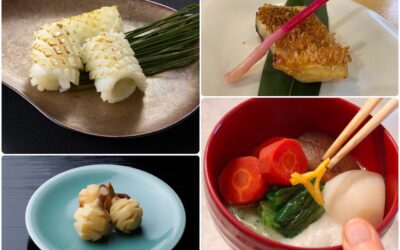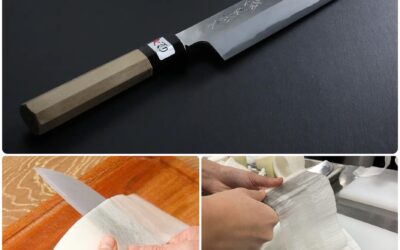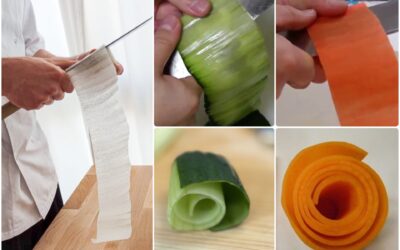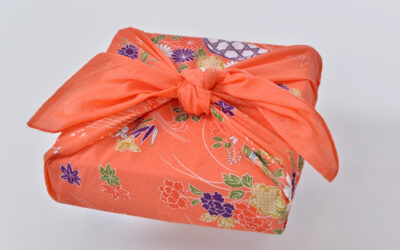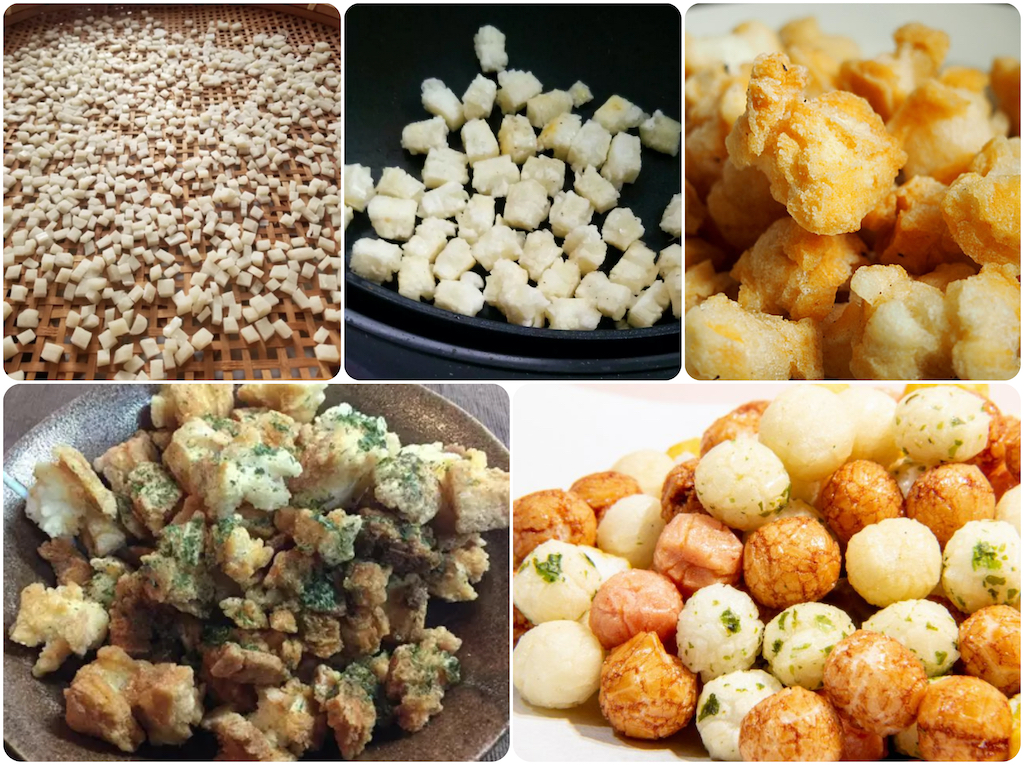
PROJECT Rice Snacks
Crisp-and-Crunchy Rice Snacks are a delicious way to use up leftover omochi. Inevitably after the New Years holidays pieces of omochi remain uneaten. Dried and cracking they can be repurposed into tasty ARARÉ.
This Kitchen PROJECT is about making crisp-and-crunchy rice snacks in YOUR kitchen. Use the basic recipe (above) to make your own version of araré.
More information about New Year’s ceremonial rice cakes called kagami mochi and their connection to araré can be found on the Kitchen Culture blog post.
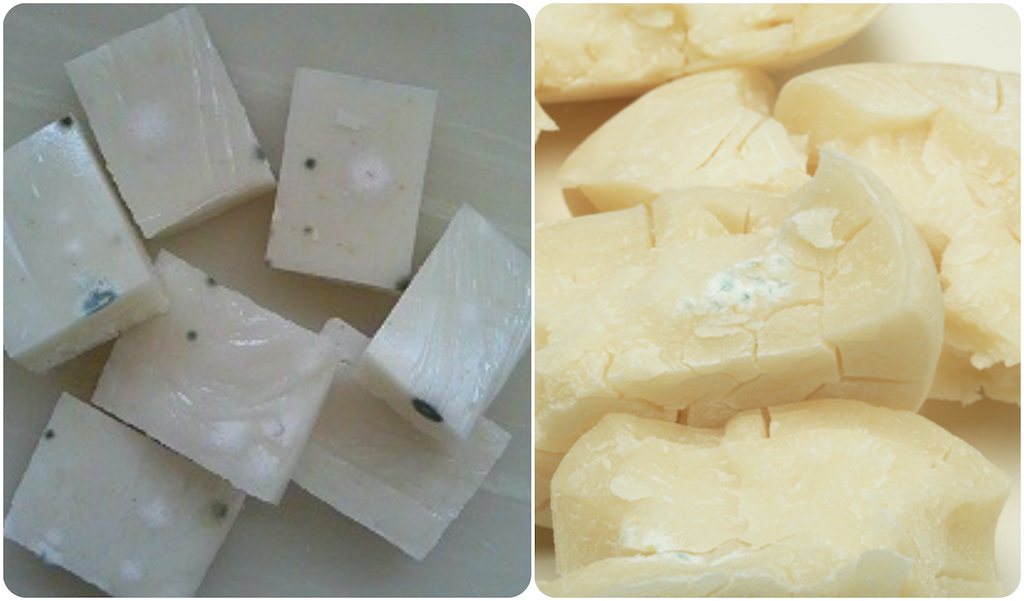
What about moldy omochi?
Japanese Granny-wisdom claims no harm will be done by cutting away the blue-green moldy spots that grow on omochi. Indeed, in the old days, ao kabi (blue mold) was cultivated for its medicinal (antibiotic) properties, placing it on open wounds to avoid infection. Anyone with allergies to penicillin (or similar antibiotics) should not eat omochi that has developed moldy spots.
Currently nutrition scientists in Japan advise the public NOT to eat omochi that has turned moldy, even after cutting away visible spots. It is difficult for non-professionals, they warn, to determine the difference between harmful molds and benign ones merely by color. Heat (cooking), they add, does not render toxic molds harmless.

